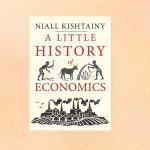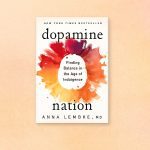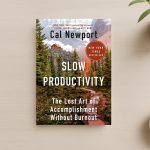A Little History of Economics by Niall Kishtainy is an engaging journey through economic thought from ancient Greece to modern debates. With clarity and warmth, Kishtainy explores how scarcity, choice, trade, markets, and moral judgment have shaped societies. Each chapter introduces influential thinkers and transformative ideas, connecting them to everyday life and contemporary challenges such as inequality, globalization, and sustainability. Avoiding technical jargon, the book makes economics accessible, showing it as a human-centered discipline that can guide better decisions and fairer policies. This concise, insightful history invites readers to understand not just how economies work, but why they matter for all.
1. Introduction to A Little History of Economics by Niall Kishtainy
A Little History of Economics by Niall Kishtainy is a sweeping yet accessible journey through the evolution of economic thought, spanning ancient civilizations to modern debates. Written in a conversational narrative style, the book is structured to guide readers through pivotal moments, influential thinkers, and transformative ideas that have shaped the way societies handle scarcity, resources, and wealth distribution.
Economics, as presented by Kishtainy, is not merely about numbers, markets, or graphs-it is a human-centered discipline that tackles essential questions about survival, prosperity, fairness, and the mechanics of everyday life. The book bridges historical context with key economic models, unpacking complex theories through engaging anecdotes and concrete examples.
2. Author Biography
Niall Kishtainy is a British economist, historian of economic thought, and author known for translating complex economic ideas into accessible, engaging prose.
– Academic Background: Studied economics at the London School of Economics, later specializing in development economics.
– Experience: Worked as a writer and policy economist, including assignments advising governments in the Middle East and Africa.
– Writing Style: Combines story-driven explanations with analytical heft, aiming to demystify economics for lay readers without sacrificing intellectual rigor.
– Publications: Alongside A Little History of Economics, Kishtainy has authored policy papers and essays on development, inequality, and global markets.
His perspective balances historical breadth with empathy, reflecting an awareness of how economic policies affect real people, particularly in developing countries.
3. Structure and Content Overview
A Little History of Economics by Niall Kishtainy unfolds in 40 short chapters, each devoted to a particular thinker, theory, or historical turning point. This format mirrors other titles in the “Little History” series, offering bite-sized narratives without losing thematic continuity.
Sections by Timeline:
Ancient and Classical Economics: Roots in Greek and Roman thought, household management, and basic scarcity principles.
Mercantilism & Proto-Economics: Trade expansion, gold accumulation, and early national strategies.
Birth of Modern Economics: Adam Smith and the “invisible hand,” Malthus on population, Ricardo on comparative advantage.
Industrial Age & Capitalism: Marx’s critique, marginalism, and labor theories.
Twentieth Century Shifts: Keynesian revolutions, monetarism, and welfare economics.
Contemporary Debates: Globalization, inequality, behavioral economics, and environmental sustainability.
4. Key Themes and Main Ideas
4.1 Economics as the Study of Scarcity and Choice
From the outset, A Little History of Economics by Niall Kishtainy frames economics around scarcity-limited resources against unlimited wants. This leads to the concept of opportunity cost: the trade-off inherent in choosing one path over another. Whether in ancient agricultural societies or modern tech economies, scarcity remains a universal constraint.
4.2 The Foundations in Ancient Thought
Economic ideas trace back to Greek philosophers like Xenophon and Aristotle, where “economics” (oikonomikos) first meant household management. They explored fairness in exchange, the role of the state in resource allocation, and moral considerations in commerce.
4.3 Mercantilist Policies and Early National Strategy
In early modern Europe, mercantilists believed wealth was measured by stores of gold and silver. Policies favored export surpluses, colonial expansion, and protective tariffs. While this approach promoted state power and infrastructure, it often overlooked individual welfare.
4.4 The Classical School and Market Mechanisms
The Industrial Revolution catalyzed thinkers like:
– Adam Smith: Advocate of free markets, division of labor, and the “invisible hand” where self-interest unintentionally benefits society.
– David Ricardo: Developed comparative advantage, showing how nations benefit from specializing and trading, even if one is more efficient at all production.
– Thomas Malthus:Warned of population growth outstripping resources, leading to famine unless checked.
4.5 Marx, Engels, and Critiques of Capitalism
Karl Marx viewed capitalism not as a harmonious system but as inherently exploitative. His theories on surplus value, alienation, and class struggle challenged the prevailing belief that markets naturally yield fairness. Marx predicted inevitable conflicts between capital and labor, culminating in revolutionary change.
4.6 The Rise of Marginalism and Microeconomic Precision
Marginalist economists like Jevons, Menger, and Walras reoriented economics toward utility-the satisfaction derived from consuming goods. This emphasis introduced mathematical tools to measure preferences, paving the way for modern microeconomics.
4.7 Macroeconomic Revolutions under Keynes
Post‑Great Depression, John Maynard Keynes argued markets could fail disastrously, necessitating state intervention. His ideas on aggregate demand, public spending, and fiscal policy reshaped governments’ role in stabilizing economies. Keynesianism dominated mid‑20th century policy frameworks.
4.8 Monetarism and Market Liberalization
Milton Friedman’s monetarism countered Keynesian dominance. He stressed controlling money supply over fiscal stimulus, advocating for deregulation and smaller government-a foundation for late 20th century neoliberal reforms.
4.9 Welfare Economics and Social Policy
Economists like Amartya Sen expanded the scope to consider capabilities and quality of life, not just income. Welfare economics addressed poverty, education, health, and freedoms, positioning them as integral to economic measurement.
4.10 Globalization and Modern Crossroads
Kishtainy explores:
– Integration of global markets and supply chains.
– Inequalities both within and between nations.
– Environmental constraints, climate economics, and sustainability.
– The role of digital economies and behavioral insights.
5. Illustrative Lessons from Chapters
Early History (Chapters 1–6)
– Economics as “cool heads, warm hearts”: blending analytical rigor with compassion.
– Scarcity in ancient civilizations and resource allocation in Rome and Greece.
– Medieval systems: Feudalism’s land-based production and lack of merit-based economic mobility.
Emergence of Modern Economics (Chapters 7–15)
– Smith’s division of labor example: pin factory efficiency and productivity gains.
– Ricardo’s comparative advantage: wine and cloth trade between Portugal and England.
– Malthus’s arithmetic food growth versus geometric population growth.
Industrial & Marxist Era (Chapters 16–24)
– Marx’s depiction of capitalist exploitation in industrial Manchester’s mills.
– Creative destruction as described by Schumpeter-innovation replacing old systems.
20th Century and Beyond (Chapters 25–40)
– Keynesian spending multipliers and the necessity for demand stimulus in recessions.
– The stagflation crisis in the 1970s leading to monetarist policy adoption.
– Behavioral economics pioneers such as Daniel Kahneman challenging the rational actor model.
– Modern debates on climate change economics, from carbon taxes to green investment.
6. Stylistic Approach
Kishtainy’s style blends storytelling with conceptual clarity. Complex theories are explained through human stories:
– Burkina Faso’s educational scarcity highlighting opportunity cost.
– Anecdotes from industrial England showing living conditions and wage dynamics.
– Contemporary vignettes like supermarkets discarding edible food to illustrate inefficiency.
By avoiding dense mathematical models, he opens the field to readers without technical training.
7. Contemporary Relevance
A Little History of Economics by Niall Kishtainy underscores economics’ omnipresence in daily life:
– Deciding between buying a watch or an iPad.
– Choosing national infrastructure investment over alternate uses.
– Balancing globalization’s gains with concerns over fairness and environmental limits.
Kishtainy positions economics not as a detached science but an evolving set of tools societies can adapt to new challenges.
8. Conclusion: A Little History of Economics by Niall Kishtainy
A Little History of Economics by Niall Kishtainy delivers more than a chronological account-it invites readers to engage critically with economic ideas, recognize their historical contingencies, and apply them thoughtfully to modern policy questions. From ancient scarcity to digital-era dilemmas, economics remains central to answering how we allocate resources, who benefits, and how we measure success.
By journeying through thinkers from Aristotle to Kahneman, Kishtainy shows that while models evolve, core questions persist:
– How can societies achieve prosperity fairly?
– How do we balance markets with state intervention?
– What is the role of moral judgment in economic decision-making?
In closing, A Little History of Economics by Niall Kishtainy suggests economics must retain not just “cool heads” for precision but “warm hearts” for human impact-a dual mission as relevant today as in any era.
If you found this summary helpful, please share it or leave a comment below.



















